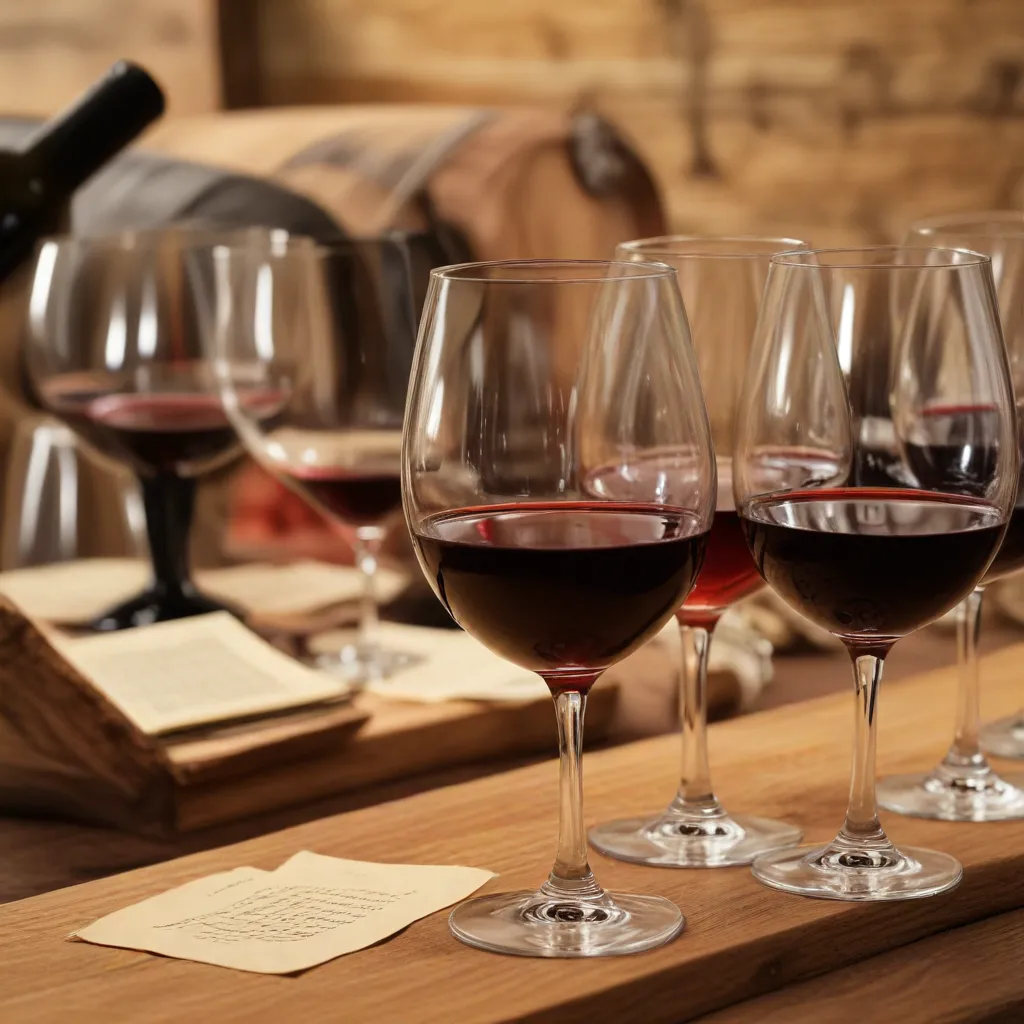
Stepping into the world of wine can feel like embarking on an odyssey of sensory delights — from the lush, velvety texture of a bold red to the refreshing, fruit-forward notes of a crisp white. As a hospitality and wine expert at the Wine Garden Inn, I’m thrilled to guide you on an educational journey through the diverse flavors and winemaking nuances that make each varietal truly unique.
Diverse Wine Varietals
Characteristics of Red Wines
The realm of red wines is a tapestry of rich, complex flavors, each grape variety contributing its own distinct personality. Take, for example, the bold and structured Cabernet Sauvignon, with its signature notes of black currant, cedar, and subtle spice. In contrast, the elegant Pinot Noir dazzles the palate with its delicate red fruit, earthy undertones, and silky mouthfeel. Merlot, on the other hand, offers a more approachable, fruit-forward profile, often with hints of plum and chocolate.
Distinctive White Wine Profiles
The white wine spectrum is no less captivating, with each varietal showcasing a unique set of aromas and flavors. The crisp, citrusy Sauvignon Blanc, with its refreshing grapefruit and lemon zest notes, provides a delightful contrast to the creamy, vanilla-tinged Chardonnay. Riesling, with its array of flavors that can range from bone-dry to lusciously sweet, offers a delicate interplay of orchard fruits and minerality. And don’t forget the aromatic Gewürztraminer, with its exotic notes of lychee, rose petal, and spice.
Rosé and Its Nuanced Flavors
Bridging the gap between red and white, rosé wines have experienced a resurgence in popularity, captivating wine enthusiasts with their diverse flavor profiles. From the pale, delicate salmon-hued rosés of Provence, with their delicate red berry and citrus notes, to the more robust, deep-colored rosés of Spain and Italy, which can exhibit ripe strawberry and watermelon characteristics, this versatile style continues to delight and surprise.
The Science of Winemaking
Understanding Terroir
At the heart of a wine’s unique personality lies the concept of terroir — the intricate interplay of climate, soil, and geography that shapes the distinctive flavors and characteristics of the grapes. A Chardonnay from the cool-climate Sonoma Coast, for instance, may exhibit vibrant acidity and mineral notes, while its counterpart from the warmer Napa Valley could showcase a more lush, tropical fruit profile.
The Role of Grape Cultivation
The meticulous care and attention that goes into growing and nurturing the grapes is another crucial factor in determining a wine’s flavor profile. From pruning techniques that regulate yield to the use of organic or biodynamic farming practices, each decision made by the vintner has a direct impact on the quality and expression of the final product.
Fermentation Processes
The magic of winemaking truly unfolds during the fermentation process, where yeast transforms the natural sugars in the grape juice into alcohol. The choice of yeast strain, the use of malolactic fermentation, and the decision to age the wine in oak barrels can all contribute to the depth, complexity, and mouthfeel of the finished wine.
Tasting and Appreciating Wine
Exploring Aroma and Bouquet
The art of wine tasting begins with the careful observation of a wine’s appearance, from its vibrant hue to its delicate legs (the slow-moving droplets that cling to the glass). But it’s the wine’s aroma and bouquet that truly captivate the senses, revealing a tapestry of scents that can range from fresh-cut flowers and ripe fruit to subtle spices and earthy notes.
Identifying Flavor Notes
As you take that first sip, focus on the flavors that unfold on your palate. Is it a burst of citrus, a whisper of stone fruit, or perhaps a hint of toasted oak? The ability to discern and describe these nuanced flavors is a skill that comes with practice and an open mind, allowing you to fully appreciate the unique personality of each wine.
Evaluating Texture and Mouthfeel
The wine’s mouthfeel — the way it feels on your tongue and in your mouth — is another crucial aspect of the tasting experience. Is it light and refreshing, or full-bodied and velvety? Does it have a crisp, vibrant acidity or a smooth, creamy texture? Paying attention to these subtleties can deepen your understanding and enjoyment of the wine.
Pairing Wine with Food
Complementary Flavor Profiles
The art of food and wine pairing is a delicate dance, where the flavors of the wine and the dish harmonize to create a memorable culinary experience. A bright, citrusy Sauvignon Blanc may enliven a fresh seafood dish, while a robust Cabernet Sauvignon can beautifully complement the richness of a grilled steak.
Enhancing Culinary Experiences
Beyond simply complementing the flavors, the right wine can also elevate the overall dining experience, amplifying the textures and accentuating the nuances of a well-crafted meal. A crisp, mineral-driven Albariño, for example, can cut through the richness of a creamy seafood chowder, while a silky Pinot Noir can harmonize with the earthy, umami notes of a mushroom risotto.
Regional Pairings
Exploring the wine and food traditions of different regions can also be a delightful way to discover new flavor synergies. The bold, spicy reds of Spain’s Rioja region, for instance, find a perfect match in the smoky, grilled meats of the local cuisine, while the bright, acidic whites of Italy’s Friuli-Venezia Giulia region can dance with the freshness of the region’s seafood and vegetable dishes.
As you embark on this educational journey through the world of wine, remember that the true joy lies in the exploration. Savor each sip, observe the subtle nuances, and allow your palate to guide you on a sensory adventure. Whether you’re a seasoned wine connoisseur or a curious newcomer, the endless possibilities of wine offer a world of discovery waiting to be uncovered.
So, raise a glass, and cheers to the wonderful world of wine! For more insights and experiences, be sure to visit the Wine Garden Inn — where our passion for viticulture and culinary excellence converge to create unforgettable moments.
